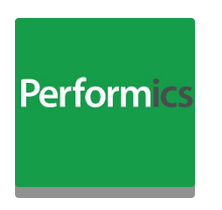 Last month, Google made a significant paid search update that’s generated a lot of buzz in the performance marketing community.
Last month, Google made a significant paid search update that’s generated a lot of buzz in the performance marketing community.
In summary, Google is removing right-hand paid search ads, and it may now serve four (vs. three) top-sponsored ads for “highly commercial” queries.
Immediately, every Google advertiser thought, “How will this impact my cost-per-clicks (CPCs)?”
Specifically, the change makes Google ad positions three and four more valuable, as advertisers jostle to appear above-the-fold. This increases competition, thus CPCs.
With a few days of data under our belts, Performics can say CPCs have risen since the change. However, we do believe that CPCs will stabilise—in the longer-term—as the marketplace sorts itself out.
This trend aligns with most major Google updates, including the famous Google Enhanced Campaigns (GEC) launch (which shook the world in 2013 by eliminating separate Desktop, Mobile and Tablet campaign management).
Advertiser response
What can advertisers do in the short-term to protect themselves from rising costs? The key is to break free from the paid search silo and start thinking about your paid, owned and earned (POE) media assets in conjunction.
The Google search page is a melting pot of POE. It has traditional paid search ads (now in the new format), as well as Product Listing Ads (PLAs), the image-rich ads you see on the top/right for product search keywords.
It has owned listings controlled by brands, mainly organic links to brands’ native sites or social pages. And it has earned content controlled by consumers, mainly real-time tweets, powered by a recent agreement that grants Google access to Twitter’s Firehose data stream.
Any of these assets – if optimized to cater to searcher intent – can engage and convert consumers. The right response to any Google AdWords change is to double-down on measuring holistic keyword-level performance across all search page assets.
To illustrate, if CPCs rise, brands will have to decide if it’s worth it, from an ROI perspective, to pay a premium for paid search traffic. Amongst inflation, advertisers that are running integrated paid search-PLA campaigns can shift budget to PLAs, in real-time, when PLAs are more efficient or higher performing. In fact, don’t even limit this to Google.
Consider shifting budgets to Bing or Alibaba. Furthermore, many searchers now start their CPG or product research journeys outside of traditional search engines, on Retail Search engines like Amazon, Tesco, Asda and Argos. New opportunities like Amazon Sponsored Search enable advertisers to engage shoppers with paid search ads on these retail sites.
To illustrate, one of Performics’s electronics clients has made Retail Search a key component of its overall paid search program, driving 37% of overall paid search revenue in 2015.
Beyond paid opportunities, advertisers who utilise POE cohesion can also take an owned/earned-first approach to Google. Running organic and paid search campaigns in conjunction enables you to adjust paid strategy in expensive auctions when you already have high organic visibility.
However, Google’s change will likely push more organic listings below-the-fold; this requires that brands focus more heavily on SEO in order to make joint paid-organic alignment work best.
And, lastly, don’t forget about the earned components of search. What you post on Twitter is now magnified on the search page, occupying valuable organic search real estate, through Google’s Twitter results. Therefore, your SEO strategy should also now include Twitter content management.
In summary, all advertisers should seek to protect themselves from CPC inflation in the midst of this change (or any of Google’s other whims) by putting a POE search strategy in place.


